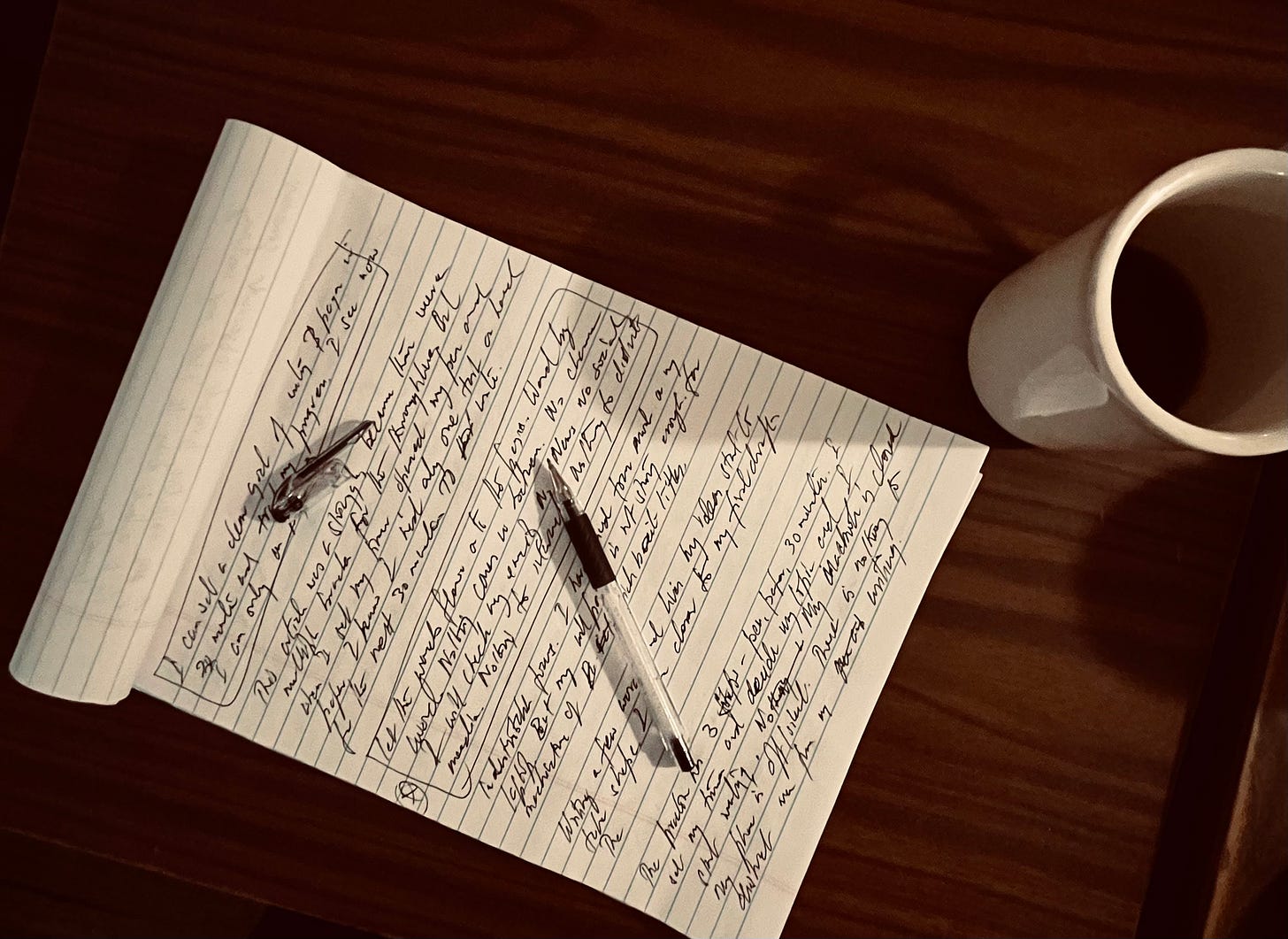Think and write with pen and paper
2,000-year-old tools for focused work in a digital world
In the early 1990’s in India, technology was a novelty, and my high school of 300 students had just six Hewlett Packard computers complete with bulky 386 CPU towers and 3.5” floppy disk drives. With limited access to computers, everything I wrote - biology assignments, English final exams, letters to friends, undergraduate college applications - was with pen and paper.
Day in and day out, I took detailed handwritten notes and drew visuals to deepen my understanding of refraction in physics, trigonometry in math or demand and supply equilibrium in economics. This ability to do deep, focused work with pen and paper was essential to my learning.
Fast forward to 1998 when I acquired my first personal computer at work. The laptop helped me crunch large databases, prepare snazzy presentations, and write long reports but it came at a cost: pen and paper was soon forgotten.
And then this summer I started writing with pen and paper again. I was introduced to the practice of Morning Pages which is three pages of daily journaling done with pen and paper.
In the initial days, my writing was illegible, filled with spelling mistakes, and my hands and wrists ached from the effort. But it turns out that writing with pen and paper is like riding a bike - it's a skill one doesn’t forget. After a few weeks, my cursive improved and even regained some of its lost elegance.
I noticed that writing with pen and paper brought me back to the deep focus of my student days. The coarse texture of the notepad grazes against my hand, and the pen’s ridges fit snugly in my fingers. The physical engagement keeps my mind focused on the task. The lines on the page are my attention guard rails, inviting me to fill them in, word by word. The temptations of the internet and social media do not distract. I am not haunted by blinking cursors or nagged by spelling and grammar checks.
Writing with pen and paper does not replace, but rather complements typing. I do first drafts, outlines, sketches, and storyboarding by hand before transitioning to digital. It supports deep thinking, from abstract to concrete, from creative to logical, without the cognitive depletion of app and task switching.
Yes, there are challenges with pen and paper, the inconvenience of digitizing handwritten content, the limited capacity of physical notebooks, and the storage of old notebooks. To solve for that, I scan my handwritten notes with Apple Notes which makes it easier to organize, search and retrieve.
I encourage you to give pen and paper a try. Write a few lines, a paragraph or perhaps a page. Experiment with journaling or outline a project report. Don’t worry if your writing is legible or spelled correctly. Don’t worry about stationery. Simply think and write with pen and paper. You may be surprised by the focus and clarity of this timeless practice.
As Nietzsche once said, “All I need is a sheet of paper and something to write with, and then I can turn the world upside down”. Sometimes going back 2,000 years to the basics - pen and paper - is what moves us forward.
Grateful toMeryl Rowlands Svitlana Midianko Unknown Unknowns Heike Larson Miss Calisota and Raksha Joshi for encouragement and feedback in writing this article.


